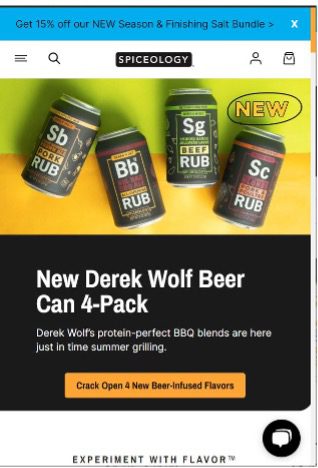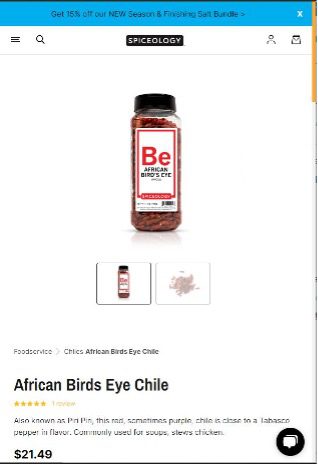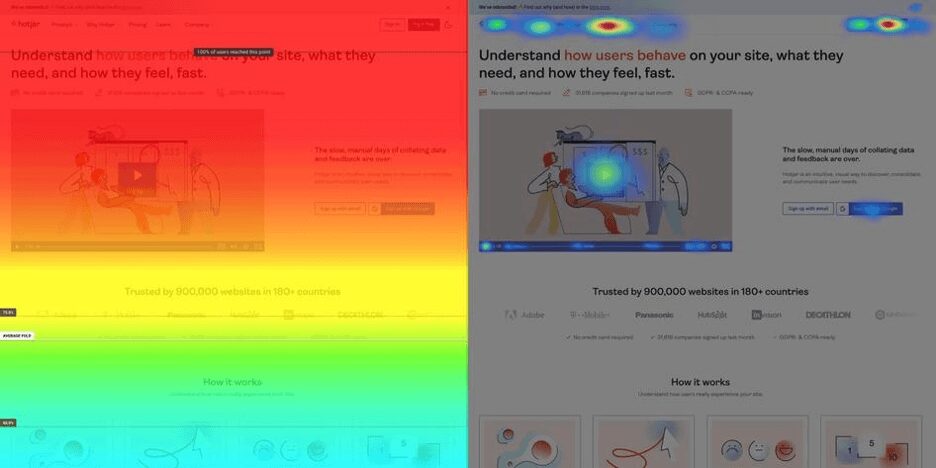It’s a given that out of the thousands or millions of people who visit your online store, only a small fraction will actually buy something.
The average ecommerce conversion rate is somewhere between 2.5-3%, although this varies by industry. The fact is, the majority of people who check out a product aren’t ready to buy it yet — they’re not even necessarily shoppers. And this shouldn’t be surprising; window shopping was a thing long before retail transitioned online.
However, if you can nudge that rate up even a little, it can make a massive difference to your topline. Simple math tells you that if you increase your conversion rate from 1% to 2%, and your average ticket size remains unchanged, you’re doubling your revenue.
Systematic, data-driven optimization can absolutely make this happen. Here are some strategic tips to improve the ecommerce conversion rate for your store.
Table of Contents
What Is Ecommerce CRO?
Conversion rate optimization is the process of increasing the number of visitors who will take a particular action on your website, helping them move closer to a purchase. On ecommerce websites, this typically means boosting direct sales, but you can also try to increase other actions, such as add-to-cart metrics and recovering abandoned carts.
Conversion Rate = [Number of Conversions/Total Visitors] X 100
Basically, this means that if 100 people visit your website and three people buy something, your conversion rate is 3%. Even if they don’t buy something, getting them to take some kind of action, such as adding a product to cart or signing up for a newsletter, gives you more options to eventually complete that purchase. Several actions of interest to a merchant are readily available to be tracked as a conversion event.
Tips for Boosting Ecommerce Conversion
There are a host of reasons why a prospect might leave your site without buying something. Everything from your site’s product options to its offers, content, design layout, and checkout experience can influence your customers. As a result, improving conversion is often a site-wide exercise.
Some of these pointers should help you get started on the right foot:
Improve Page Load Speeds
Pretty basic, but an excellent ecommerce tip nonetheless. There’s little that can wear out a user’s patience like a web page that loads slowly. In fact, if your page load time exceeds just one second, the probability of bounce increases by 32%.
There are a number of actions you can take to boost page load speed. Better hosting is top of the list. When you’re on a shared server, it can often strain your loading times. If you have a lot of images and videos on your site, as you’re likely to with ecommerce, another tip is to compress and optimize your images to reduce the file size.
Web and browser caching can help as well. Caching stores copies of your site files so that they load faster. You can implement caching at the server level, via a caching plugin, or even at the browser level.
Optimize Website for Mobile


Mobile traffic is likely to drive over 43% of all ecommerce sales in 2023. If you want to increase revenue on your site, you have to ensure it’s optimized for smaller screens.
A good tip for mobile ecommerce optimization is to address navigation. Browsing is fairly easy on a desktop with a larger screen, multiple tabs, and a mouse. It’s less so on mobile. Try using hamburger menus to minimize the navigation bar. This will help users quickly access the pages they want without having to scroll around too much.
Given the limited real estate, you may also want to be strategic about text placement. Images and videos are better conversion drivers on ecommerce than large stacks of text.
Also, ensure your CTAs are visible and compelling. A good tip for ecommerce is to use CTAs above the fold so users don’t have to scroll to find them. Finally, minimize or eliminate the use of pop-ups or other distractions that can annoy users or pull them out of the purchase journey.
Personalize the Experience
Want to make your customers feel valued? Here’s a tip: personalize the ecommerce journey for them. Modern shoppers are unimpressed with mainstream, garden-variety, experiences. They prefer bespoke communication and offers.
You can deliver this using targeted and tertiary data about your visitors. Leverage their account history, device information, geolocation data, and browser cookies to learn or predict their preferences. For instance, mobile users should see only mobile-optimized content. Weather data and prevailing fashion trends in different locations can be used to optimize product recommendations.
Extend this personalization across all touchpoints, including customer support, calls-to-action, and, crucially, checkout. With cart abandonment rates as high as 70%, optimizing checkout can be pivotal for ecommerceconversion. A good tip is to deploy a composable checkout solution that lets you create a hyper-personalized checkout experience for your customers. This includes personalizing options for payment, insurance, delivery, post-purchase upsell, and more.
All of this can help keep your customers engaged and reduce drop-offs in the purchase journey.
A/B Test Your Site
A/B testing is a time-tested tip for ecommerce optimization. It helps you understand which features appeal to your audience and which are counter-productive.
Essentially, it’s a research method where you expose two groups of your target audience to two different versions of a webpage. The idea is to change one variable between the versions and keep everything else constant. This lets you directly analyze the engagement level for the two features.
Testing lets you verify your assumptions with real users and present your customers with the version of your site most likely to induce conversion. If you do run an ecommerce A/B test, a handy tip is to track a range of metrics, including bounce rate, session duration, click-through rate, abandonment rate, scroll depth, and order value among others. These will help you maximize your findings and arrive at the most profitable conclusions.
Bear in mind that A/B testing doesn’t give you the full picture. While it will tell you what’s working and what’s not, it won’t tell you why. To understand this and to design better experiments, you will need to rely on granular customer data.
Source Extensive Customer Data

A great tip for ecommerce optimization, and frankly, for any kind of business operation, is to work with as much customer data as possible. Don’t hesitate to reach out to your customers at multiple points in the purchase journey and ask them what is or isn’t working for them.
You want a holistic understanding of how customers engage with your website. This includes the drivers that make them visit your site, the bottlenecks that make them leave, and the incentives that get them to convert.
Surveys and interviews are excellent ways to do this. Ask them questions like how they found your site, why they’re about to leave, and why they’d recommend a purchase to a friend. Offer them incentives, such as discounts or early access, to make them more receptive to your questions.
Also make an effort to understand user behavior. This is typically very hard to do with questionnaires. A handy tip is to use ecommerce behavioral tools like heatmaps and video recordings, such as those offered by Hotjar. These help you visually analyze how a user engages with your website, spot the elements that aren’t working and improve the user experience for future visitors.
Optimize Post-Visit Outcomes
Ecommerce optimization doesn’t end with your website. If a prospect leaves your site without buying something, you want to do everything you can to reel them back in. And if they do buy something, capitalize on the connection to boost customer lifetime value.
One of the ways to do this is to use custom retargeting ads. If the user adds items to the cart and abandons it, they’ve indicated a higher level of interest than if they just viewed the product. Consider retargeting them with the product image and personalized copy along the lines of “Still interested? Here’s 10% off on us.” This makes a lot of sense for first-time customers who likely qualify for a small discount anyway.
Another tip to boost ecommerce sales is to engage with buyers post-purchase. Use targeted emails with reminders to top up their purchases, renew subscriptions, advertise handy accessories, or to inform them about new product releases. With personalized recommendations, this sort of outreach can increase order value and deepen your relationship with your customers.
Build a High-Performing Ecommerce Site With Coalition
Like what you see? Get more tips for ecommerce optimization on our blog. Partner with a proven ecommerce agency like Coalition to cut down on leakages and supercharge your sales. We generate 687% more revenue than the average agency and we’ve earned over half a billion dollars in revenue for hundreds of clients worldwide.
Check out our portfolio or customer reviews. Reach out to us today for a consultation and free site audit for your ecommerce store.


